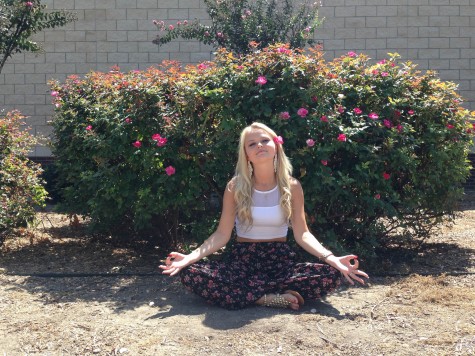Dangers of tanning
April 8, 2014
-
Wear a broad spectrum sunscreen year-round of at least SPF 15 that protects against both UVA and UVB rays.
-
Avoid sun exposure between the peak hours of 10 a.m. and 3 p.m.
-
Wear protective clothing, such as a broad-brimmed hat and long sleeves.
-
Apply sunscreen 30 minutes before going out in the sun and every two hours after while you are exposed.
[/sidebar]
With the school year creeping towards summer, it seems as if some girls are in a competition to see who can get the darkest tan; laying in the heat for hours, spreading thick tanning oils over their bodies, hoping for their bodies to turn shades darker than natural. But even though a golden brown glow is an ideal for many girls, the dangers of tanning are far worse than they seem. Whether it is indoor or outdoor tanning, the effects on the skin can cause, not only sunburns, but melanoma – one of the worst kinds of skin cancer – as well as premature aging of the skin.
I am guilty of tanning to extents considered hazardous. Laying out until my skin is a deep red, being unable to move because my body is fried. This was the routine last summer until I finally had the deep tan I desired, causing my mother to confiscate my supply of tanning oil in the fear of me eventually developing skin cancer, just like my mother has.
In regards to tanning, there are many myths. Myths stating that the human body needs a steady supply of Vitamin D as provided by the sun, which is false. Although Vitamin D is both important and beneficial, there is no need to get it from UV radiation. Vitamin D can be found in spinach, kale, okra, collards, soybeans, white beans, salmon, perch, rainbow trout, the list goes on.
Brandith Irwin, MD, a Seattle dermatologist and spokeswoman for the American Academy of Dermatology, agrees.
“It’s easy to supplement without tanning,” Irwin said in WebMD’s ‘Tanning Myths: What’s True, What’s Hype?’. “Even with sunscreen on, you may produce some vitamin D. No sunscreen blocks all UV rays.”
In addition to the brown glow, tanning produces premature aging of skin called “photo aging” which is that wrinkled leathery look. Too much exposure to sun may lead 20-year-olds to look like they are in their late thirties, because their skin turns leathery. In another study, published in Aging Cell, ultraviolet radiation exposure from the sun was found to speed the accumulation of DNA mutations in human skin associated with premature aging.
“I got really sunburned over Spring Break this year and I think I may have even gotten Sun Poisoning,” sophomore Kacie Connell said. “It worried me because I didn’t realize how badly I could get sunburned and what a toll it could take on me physically.”
The start of spring brings the start of tanning season. But before getting a golden glow, school nurse Jeannie Haines has some important information for those spending time in the sun.
Click the play button below to hear more from The Red Ledger’s Adrian Moger.





